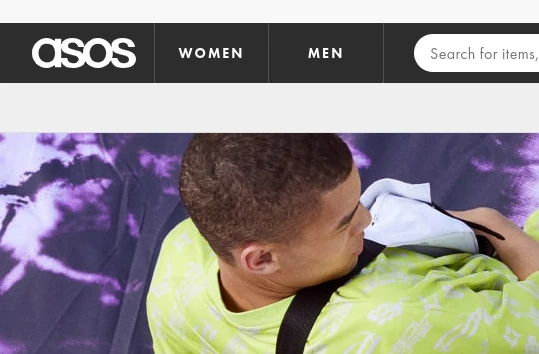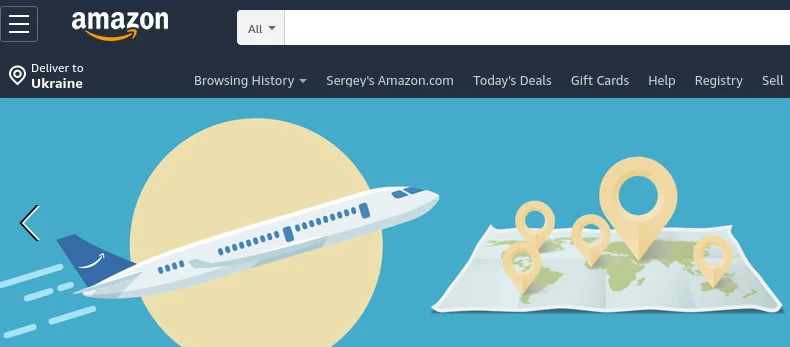How to Design E-commerce Logos: Methods and Tips
Published by Incomedia in Guides and Tips · Thursday 17 Sep 2020
tatistics show that in 2018, 1.8 billion Internet users purchased 2.8 billion dollars' worth of goods. According to experts, online shopping is only going to keep growing. How can online store owners compete for customer attention? You need to create a positive image for your audience in order to stay ahead of the competition. Branding can help you achieve this.
Logo, Company Style, Brand: What's the Difference?
A logo is an image, a text element, or a combination of both that represents a company and defines its graphic image. A successful logo creates such a strong association that all it takes is one glance to evoke the desired emotions. When you see Nike's logo, for example, certain images immediately come to mind: sports, motivation, personal growth, and self-confidence.

The logo is part of the brand's company identity. A company's identity is a comprehensive concept. It is the sum of all the images and all the methods that create the brand's style. This includes the approved colors, fonts, and typographic elements all the way down to the shape and design of business cards and employees' clothing styles, among other things.
A company's identity is developed by the brand. And the brand is how the company is perceived: what people feel when they see the logo or hear the company's name or slogan. This is a unique image based on their perception of the company's identity, its products, and previous interactions with it.
Let's take another look at the example of Nike. Imagine that it was an unknown company. What would you think if you looked at a symbol without a name? Now you understand that there's more to their branding than the symbol. The way that the brand presents itself and the products it creates and markets - all of these factors influence the target audience's associations. The best e-commerce logos work with the brand rather than existing separately from it.
Developing an E-Commerce Logo: Step by Step
In order to create an e-commerce logo, you need to understand its purpose. Basically, this symbol will be used in your site's header as well as in accompanying elements: packaging, advertising materials, etc. The standard requirements for a logo are that it should be:
• unique;
• memorable;
• concise;
• expressive;
• universal;
• evocative.
To sum up: your online store needs a logo that is easy to remember and that users can quickly associate with your company. It needs to look just as good small or large, and be suitable for different types of screens. Now think about how to create a suitable branding element.
Preparation
First, take a moment to:
• study your niche in the market;
• identify your target audience;
• understand who your main competitors are.
At the same time, identify what it is that makes your project stand out from the competition, its current situation, and its potential. Write out your brand's philosophy and identify the various criteria that you think customers should value in your company.
Design Concept
After obtaining your analytic data, establish the precise tasks and goals and plan out your company's general strategy. This will form the basis for your image. Now think about which obvious images your brand evokes. Make a list of words, emotions, and associations.
Choosing the Elements
Now you can take a deeper look into your brand concept. Determine the main ideas for your e-commerce logo and start working on sketches and drafts. At the same time, you also need to choose your brand's font, colors, and graphic style (guidelines for how to edit your photos, create page layouts, and choose design elements). These elements should be consistent throughout your entire online store: from the home page's header to the product description pages.
Test
Soon, you need to let the public evaluate your logo options. To start, you could use your project team as a test group. Then, there are a few different ways to proceed: add your logo to your website directly, or use consulting services that run tests on target groups. Depending on your parameters, they'll choose people that best represent your target audience to select the image they think is most appropriate for your project.
Integrating your Logo
Now you're ready to begin integrating your approved online store logo into your project. Use it for your site header, as a watermark for your photos, as your social media profile picture, on your packaging, for branded products, in online advertising, and on the street - anywhere your company goes, it should be accompanied by its most important branding element.
Copyrights for Graphic Elements
People always try to copy successful images. But don't worry. Picture a copy of the McDonalds' logo. The original would still be recognizable. A logo's owner doesn't stand to lose anything if they own the copyright. As soon as you find an image you like and that seems attractive to the public, file for the appropriate legal protection right away.
Main Types of Logos
We can broadly define a few different types of logos that are often used for online stores' branding.
1. Graphics. These are especially popular among major brands. These logos are simple images, without accompanying text. They're appropriate for companies who already have well-defined connotations on the market. In these cases, audiences see more than one level of meaning in these simple symbols. The best examples are Mercedes-Benz, Shell, and Apple.

This category also includes the brands' characters - brand mascots - which can inspire public trust if used correctly. Some examples that immediately come to mind include Colonel Sanders, Mr. Proper, and Bibendum

2. Text logos are stylized (or abbreviated) versions of the company's name, designed as an icon. They are easy for audiences to understand. These logos are easy to remember and immediately call up the right associations. ASOS, Google, McDonalds', and Microsoft all chose this design option.

3. Combined. These logos combine the company's name with graphic elements. This is the kind of emblem that automobile companies often use. Intel, Nissan, and Amazon are all examples of combined logos.

How to Create an E-Commerce Logo: 4 Ways
The first option you might think of is to draw your logo yourself. Advantages: you know exactly what you want, you can control the whole process, and you'll get a unique design for free. But this is only possible if you are good at drawing and know how to use graphic design software. Prepare to spend around 20 hours of work on the design process.
The second option is to hire a professional to design your e-commerce logo. You'll need to prepare a detailed project brief. Advantages: a wide selection of designers, and high-quality results. Disadvantages: it can be hard to find the right professional, you'll need to monitor their work, and this option can be expensive.
You can also create e-commerce logos online using tools like Logopony. All you need to do is specify your company name and, if you like, a color palette, as well as your industry. The program generates dozens of unique options for you. You can download the one you like in any dimension and format (including with a transparent background). Advantages: completely automated process, low cost. Disadvantages: you can't use your own font or icons with this site.
The fourth option is a friendly one. Sign up for a crowdsourcing service (ex. crowdspring.com or designhill.com) and create an application. Interested designers will send in their sketches. You can choose the option you like best and purchase it. Advantages: a wide selection of options from designers with a variety of styles. Disadvantages: little control over the process. Many services charge a fee, even if you don't find anything you like.
Conclusion
How do you design an e-commerce logo to create a successful brand image? By developing all the elements of your company identity at once. Focus on your audience and on the benefits of your project. Remember that brand names can change over time. In fact, you might start by creating a logo with your company name. Once it becomes famous, try creating a symbol.

